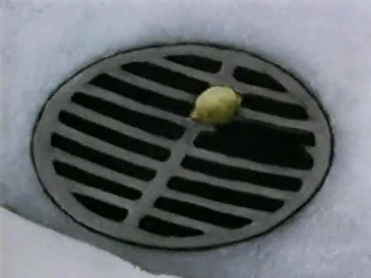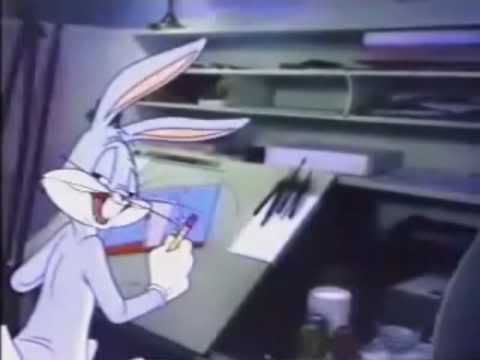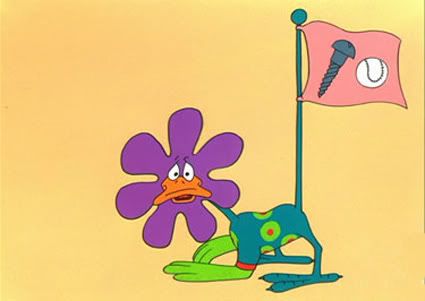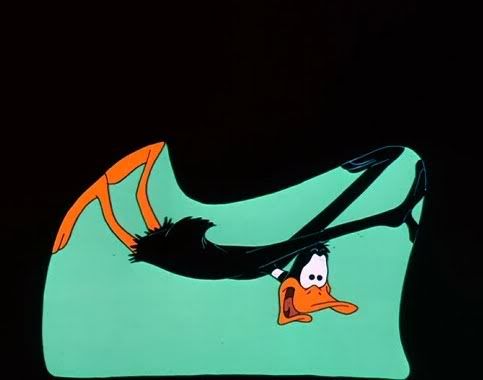Well, in case you have already forgotten--I know I sometimes do--it bears mentioning that people have been doing the same things we're doing with Photoshop long before Photoshop came along.
Pas de Deux, Norman MCLAREN, 1967 by shortanimatedworld
A blog from the Animation crew at the School of the Museum of Fine Arts in Boston, MA.






When the Day Breaks is a cartoon animation, with a theme that uses the song, and a plot that uses it as a double-entendre. It begins with a Chicken, who finishes his breakfast, and goes to the store to buy more lemons, and biscuits. Meanwhile, over on the other side of town, a cheerful Pig sings the song’s title to herself as she peels potato skins for her breakfast. As she reaches for milk to pour into her bowl of potato skins, she realizes that the milk had gone bad, so she decides to take a stroll over to the closest store to go buy some more milk. Coincidently, this is the same store the Chicken had gone to earlier to buy his lemons and biscuits. And as he leaves the store with his groceries, he accidently bumps into the Pig, and one of his lemons falls out of his hand and rolls down a drainpipe. He doesn’t take the accident to well, and gives the Pig a quick, sharp scowl, and storms off. The Pig cringes, and walks into the store to pickup her milk, glancing at a tray of lemons as she enters. But before she finishes her purchase, she hears a loud crash coming from outside. She rushes out to see what had happened, and is horrified to see that the Chicken she had bumped into earlier, had just been hit by a car. The film begins to meld into the Chicken’s entire life, his family, his childhood, and even his anatomy. And just as quickly as we enter this vision, we come back and see the ambulance with the Chicken drive off into the fog. The Pig, devastated to have witnessed the death of somebody she had just met, quickly finishes her purchase, and sprints back to her apartment, panting, and hearing her own heartbeat. Once she’s home, all senses of joy, and optimism, are gone. She pulls down the blinds for her windows, blocking out the grey, and reality of the day outside. Though as she finishes her breakfast, she pulls herself back together, and reopens the blinds, and lets the sunlight back in. Earlier I mentioned that the theme of this cartoon revolved around the song ‘When the Day Breaks’, and that the plot used the title as a double-entendre. Well in my own opinion, indeed it did. Metaphorically speaking, the Pig was having such a wonderful and cheerful morning, prior to the incident, and it was this incident, which had almost in a sense broken all of that. The film was created by Amanda Forbis, and Wendy Tilby. It used a series of creative and innovative approaches to animation, in which the initial footage was filmed live action, where Amanda and Wendy would act out what the characters were doing, and the live footage was painted over into a cartoon; it was rotor scoped. The film was made for the National Film Board of Canada in 1999, and won many awards, including a nomination for an academy award (which it did not win, but came extremely close).
-Jon
Image was copied from www.nfb.ca/.../viewing/ when-day-breaks-fr/






















 -Lily.
-Lily. Chuck Jones treatment of Daffy in this animation is heavily reminiscent of "The Metamorphasis" by Franz Kafka, and Jone's decision to break down both the barrier between veiwer and character, and character and creator, is most certainly a reference to absurdist playwriting, especially "Rosencrantz and Guildenstern Are Dead" by Tom Stoppard.
Chuck Jones treatment of Daffy in this animation is heavily reminiscent of "The Metamorphasis" by Franz Kafka, and Jone's decision to break down both the barrier between veiwer and character, and character and creator, is most certainly a reference to absurdist playwriting, especially "Rosencrantz and Guildenstern Are Dead" by Tom Stoppard. 



Clip from "Duck Amuck". Image was taken from www.thelmagazine.com
The classic Daffy Duck episode, “Duck Amuck” is a cartoon both hilarious to cartoon lovers, and terrifying to cartoon ducks! The cartoon originally starts off as a spoof of “The Three Musketeers”, starring Daffy Duck. He lunges into the first scene, with his rapier in hand, and shouts “Stand back Musketeers! They shall sample my blade!” and begins to humorously duel with himself. But SUDDENLY! He finds himself in the middle of a blank page, and gestures for the illustrator to bring the original scenery back. But to Daffy’s discontent, the illustrator doesn’t bring back the original scenery, and instead, throughout the rest of the cartoon, tortures Daffy with a series of scene changes, sound effect alterations, and other various slapstick antics. The cartoon was produced by Warner Bros. Cartoons, and directed by Chuck Jones (one of the major cartoonists and directors of the day). Chuck Jones chose this plot revolving around random scene changes, for both comical and philosophical reasons. He wanted to prove a point, that a cartoon character can be recognizable simply by his or her personality, even if their voice, or physical appearance changes. Forty-one years after it’s initial release in 1953, “Duck Amuck” was nominated #2 in the “50 Greatest Cartoons of All Time”.
-Jon


